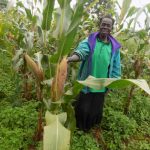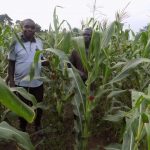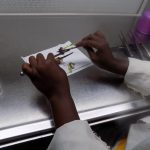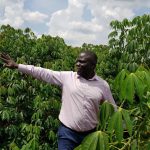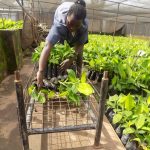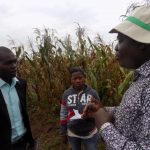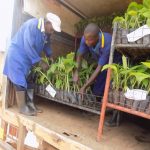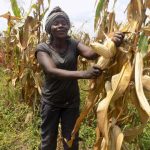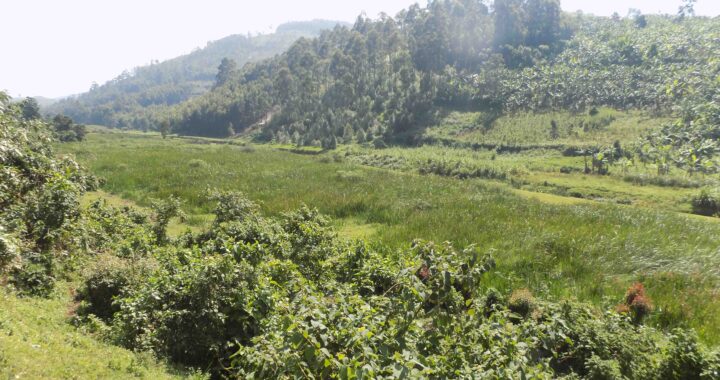Regional evaluation on pro-vitamin A-enhanced banana is a success
3 min readRegional evaluation on pro-vitamin A-enhanced banana is a success
By Christopher Bendana
Scientists in the National Agricultural Research Organization are nearly at the end of developing a banana incorporated with pro-Vitamin A.
Regional evaluation trials carried out by the scientists on the cooking bananas (Matooke) in Mbarara, Mbale, Hoima, and Wakiso reveal the incorporation of pro-vitamin A at the target levels.
“We have been able to increase the amount of pro-vitamin A from per 5 micrograms per gram to 20 mircograms per gram of dry weight,” Stephen Buah, the principal investigator based at the National Banana Programme, Kawanda told ScienceNowMag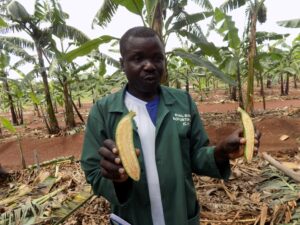 recently at the sidelines of Uganda Biotechnology and Biosafety Consortium 10-year celebrations at Fairway Hotel in Kampala.
recently at the sidelines of Uganda Biotechnology and Biosafety Consortium 10-year celebrations at Fairway Hotel in Kampala.
The evaluation trials have been conducted at Mbarara Zonal Agricultural Research and Development Institute (MbaZARDI), Bulindi Zonal Agricultural Research and Development Institute in Hoima (BuZARDI), Buginyanya Zonal Agricultural and Development Institute in the East (BugiZARDI), and at the National Agricultural Research Laboratories (NARL) Kawanda.
Multiple Ministry of Health demographic survey reports have talked of nutrient deficiencies, especially among pregnant women and children in the most food-secure areas of Uganda like in Bushenyi district.
Scientists believe that the incorporation of pro-vitamin A in Uganda’s most staple foods would mitigate the challenge.
The evaluations were done in some of the consumer-preferred banana varieties of Nakitembe and M9 also referred to as Kiwangaazi by the locals.
NARO Awareness campaigns bear fruit
Johnson Agondeze Ntairaho, a banana farmer, and neigbour of BuZARDI said people in the area were short and small because of poor nutrition.
“The legs and hands are small. They should help and give it to us,” he beseeched the powers to allow the scientists to release the pro-vitamin A-enhanced banana to the farmers.
Ntairaho, whom we found at the BuZARDI, said he had learned a lot from the institute’s awareness initiative.
“I know that vitamin A is important for improving one’s sight,” he said.
Prof Achilleo Kaaya, a food scientist at Makerere University School of Food Technology, Nutrition, and Bio-engineering praises the development of a bio-fortified banana with Vitamin A.
“The strategy is very good as the banana is widely consumed by the population,” he says.
The average consumption of bananas is the highest in the world according to the National Banana Program at Kawanda at 220 kg per capita annually.
However, he advises carrying out a sensory test as there are no changes in the bananas.
This is from experience on the orange-fleshed sweet potato.
“The five senses, the taste, the smile, the flavour. Otherwise, the effort will be wasted,” he warns.
The pro-vitamin A-enhanced banana faces another serious hurdle. The gene from a wild banana (Asupina) that enhanced the Vitamin was incorporated using genetic engineering techniques.
Genetic engineering is globally regulated under the Cartagena Protocol. The protocol calls for the enactment of a regulatory framework. This is the Genetic Engineering Regulatory Act in the Ugandan case. The bill has been passed twice by Parliament; first in 2017 and also in 2018 Present Museveni initially had issues to do with the conservation of indigenous species. It is not known if the President has assented to the bill after the second passing by Parliament.
